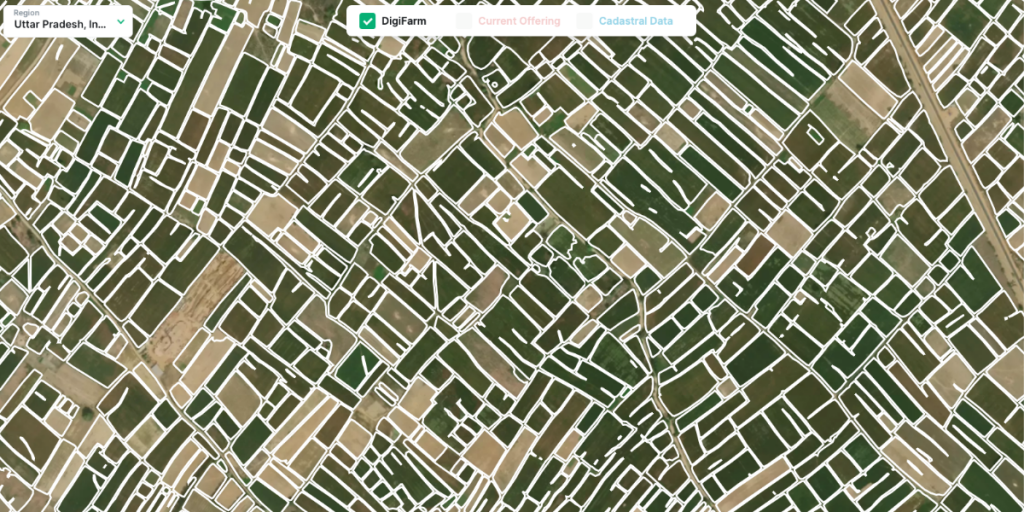AWS Public Sector Blog
Tag: Amazon EC2
Bringing world-class satellite imagery to smallholder farmers with open data
As part of the Amazon Sustainability Data Initiative (ASDI), AWS invited Nils Helset, co-founder and chief executive officer (CEO) of DigiFarm, to share how AWS Cloud technology and open data support DigiFarm’s efforts in precision farming to make agricultural practices more sustainable and efficient.
National Numeracy uses the cloud to help UK adults build confidence with everyday math
The United Kingdom (UK) government’s 2011 Skills for Life survey estimated that about 49% of UK adults had levels of numeracy—the ability to understand and use math in real-life situations—on par with primary school children. In response, National Numeracy, a nonprofit to help UK adults increase numeracy, was founded in 2012. Leveraging AWS, National Numeracy established a digital-first approach to engage UK communities with educational resources that help improve real-world math skills that can help them better manage their finances, find new job opportunities, assist their children in math, and more.
AWS resources to address Apache Log4j vulnerabilities
This post aims to provide a summary of all the currently disclosed Apache Log4j issues as well as important resources that Amazon Web Services (AWS) has released to help our customers and partners limit any risks posed by these issues.
American Forests uses the cloud to advance Tree Equity across the United States
The nonprofit American Forests is focused on advancing social equity with a national reforestation movement. Trees provide significant benefits against heat related illnesses and climate change, and trees can help advance social equity when they are planted in the neighborhoods that need them the most. But the challenge of achieving Tree Equity across the country is immense. To address this, American Forests is leading a new national campaign through the Tree Equity Score, powered by the Amazon Web Services (AWS) Cloud.
Singapore’s IHiS scales vaccine operations with AWS to meet evolving on-the-ground requirements
To support Singapore’s national vaccination program, the Integrated Health Information Systems (IHiS) needed the capability to scale its systems to sustain significantly higher loads at very short notice. In addition, its teams needed to be able to develop and implement new features at speed to address evolving vaccination policies and changing, on-the-ground requirements. The agency turned to Amazon Web Services (AWS).
How to scale and optimize Moodle LMS on AWS
Moodle is an open-source learning management system (LMS). Moodle has more than 300 million users worldwide across both academic and enterprise organizations, and is the world’s most widely used learning platform. There are many ways to get started with Moodle on AWS. In this blog post, I focus on how to scale and optimize Moodle once you are already serving students. In this case, you may need to deal with migrating data from an existing platform and making sure the new environment caters to thousands of students, and still be cost-effective — we cover additional considerations in this walkthrough.
Automate security orchestration in AWS Security Hub with Trend Micro Cloud One
As organizations mature in their cybersecurity capabilities, they are looking to try and leverage automation to reduce the operational burden of alerting, detecting, and responding to threats. This blog post walks through how to combine findings from disparate security systems into a single operational view to help analysts identify, respond, and remediate existing threats while maintaining a dynamic response platform that scales with their environment.
Preserving the history and language of the Confederated Tribes of the Umatilla Indian Reservation using AWS
Oregon and Washington are home to the Confederated Tribes of the Umatilla Indian Reservation (CTUIR)—a union of the Cayuse, Walla Walla, and Umatilla tribes. Their language, Sahaptian is classified as severely endangered by UNESCO. CTUIR was searching for a way to preserve legacy knowledge in a way that can be passed down to future generations and strengthen its community. To do this, CTUIR worked with Amazon Web Services (AWS) and AWS Partner Dan Ryan to build an online dictionary of the Sahaptian language, powered by the cloud.
How one nonprofit digitally transformed to support art and culture in a changing world
Tessitura Network, a member-owned nonprofit company, provides customer relationship management (CRM) technologies and services to performing arts, cultural, and entertainment organizations around the world. Tessitura integrates what used to be disparate components of running an arts and culture organization, and supports organizations to gain a full picture of their customers and patrons, to segment and analyze data for insights, and to build personalized engagements with donors and communities they serve—all using the cloud and Amazon Web Services (AWS).
Stockholm Public Transport transforms its ticketing system with the AWS Cloud
In the Greater Stockholm Area, SL (Stockholm Public Transport) is responsible for public transport services for more than three million citizens. SL is transforming their ticketing system with a new, “future-proof” alternative built and managed in-house. This major digital transformation project, built on the Amazon Web Services (AWS) Cloud and using microservices, is currently being rolled out across the city. The new ticketing system is an integral part of SL’s commitment to make sure everyone who lives, works in, or visits Stockholm, “has access to well-developed, easily accessible and reliable public transport.”









